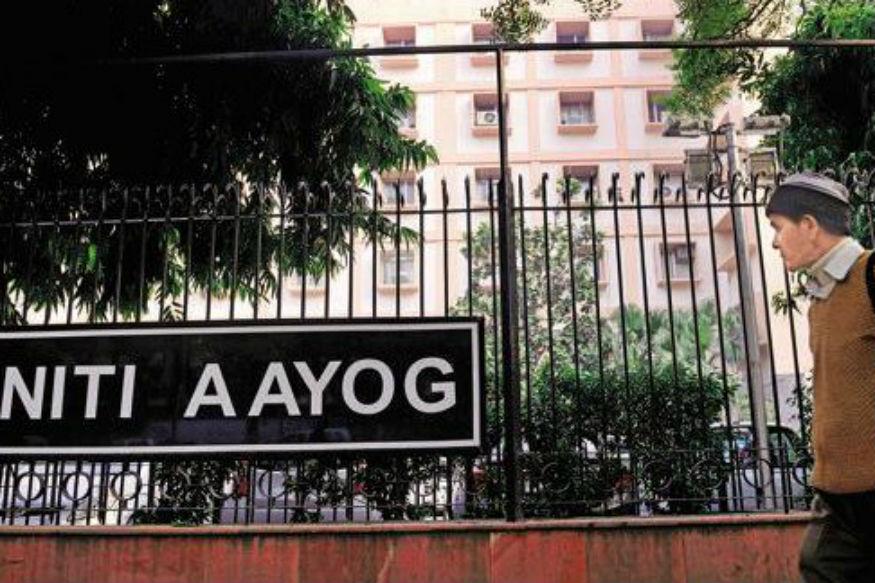As many as 24.82 crore people moved out of multidimensional poverty in nine years to 2022-23, with Uttar Pradesh, Bihar and Madhya Pradesh registering the largest decline, Niti Aayog said in a report on Monday.
According to the NITI discussion paper, multidimensional poverty in India declined from 29.17 per cent in 2013-14 to 11.28 per cent in 2022-23, showing a reduction of 17.89 percentage points, with about 24.82 crore people moving out of the bracket during this period.
Prime Minister Narendra Modi in a tweet on X said: ”Very encouraging, reflecting our commitment towards furthering inclusive growth and focussing on transformative changes to our economy. We will continue to work towards all-round development and to ensure a prosperous future for every Indian.” The national multidimensional poverty measures simultaneous deprivations across three equally weighted dimensions of health, education, and standard of living that are represented by 12 sustainable development goals-aligned indicators, according to NITI Aayog.
These include nutrition, child and adolescent mortality, maternal health, years of schooling, school attendance, cooking fuel, sanitation, drinking water, electricity, housing, assets, and bank accounts. The National Multidimensional Poverty Index (MPI) by Niti Aayog uses the Alkire Foster methodology to assess the decline in poverty rates. However, the National MPI covers 12 indicators while global MPI covers 10 indicators.
At the state level, Uttar Pradesh topped the list with 5.94 crore people escaping poverty followed by Bihar at 3.77 crore and Madhya Pradesh at 2.30 crore.
All 12 indicators of MPS have shown remarkable improvement during this period.
Addressing reporters here after the release of the paper, NITI Aayog member Ramesh Chand said 24.82 people who escaped multidimensional poverty in nine years translates into 2.75 crore people escaping multidimensional poverty every year.
”Government has a goal to bring down multidimensional poverty to below 1 per cent and all efforts are being made in that direction,” NITI Aayog CEO BVR Subrahmanyam said.
The paper said India is all set to reach single-digit poverty levels during 2024.
It also shows that the pace of decline in poverty head count ratio using the exponential method was much faster between 2015-16 to 2019-21 (10.66 per cent annual rate of decline) compared to the period 2005-06 to 2015-16 (7.69 per cent annual rate of decline).
According to the paper, poorer states record a faster decline in poverty, indicating reduced disparities.
The paper also said India is likely to achieve Sustainable Development Goals (SDGs) 1.2 (reducing multidimensional poverty by at least half) much ahead of 2030.
According to Chand, growth in the agriculture sector in these nine years has accelerated compared to any other period.
The paper’s latest estimates show that cooking fuel (43.90 per cent) and housing (41.37 per cent) continue to have the highest deprivation, while indicators like child and adolescent mortality (2.06 per cent), electricity (3.27 per cent) and bank account( 3.69 per cent) maintain the lowest deprivation levels based on NFHS-5 (2019-21).
It pointed out that the proportion of multi-dimensionally poor persons in the total population has fallen from 55.34 per cent in 2005-06 to 24.85 per cent in 2015-16 and to 14.96 per cent in 2019-21.
The report said the recent National MPI was based on National Family Health Surveys 4 (2015-16) and 5 (2019-21).
Owing to a lack of data for the years between 2005-06 and 2015-16 and after 2019-21 concerning the incidence of poverty levels, the headcount poverty rations for 2013-14 and 2022-23 have been estimated based on the compound growth rate of reduction in the incidence of poverty levels between 2005-05 and 2015-16 and 2015-16 and 2019-21 respectively An official statement said the government of India has made remarkable progress in improving the lives of people, aiming to reduce poverty in all dimensions.
Noteworthy initiatives like Poshan Abhiyan and Anemia Mukt Bharat have significantly enhanced access to healthcare facilities, leading to a substantial decrease in deprivation, it added.
The statement said operating one of the world’s largest food security programs, the targeted public distribution system under the National Food Security Act covers 81.35 crore beneficiaries, providing food grains to rural and urban populations.
Oxford Policy and Human Development Initiative (OPHI) and United Nations Development Programme (UNDP) have provided technical inputs for this paper.
The World Bank defines the international poverty line at USD 2.15 ( in 2017 purchasing power parity terms) daily to measure monetary value.
The report further said the latest data by World Bank indicated that the poverty headcount ratio in India at USD 2.15 a day decreased from 18.73 per cent in 2015 in 2015 to 11.9 per cent in 2021.


















